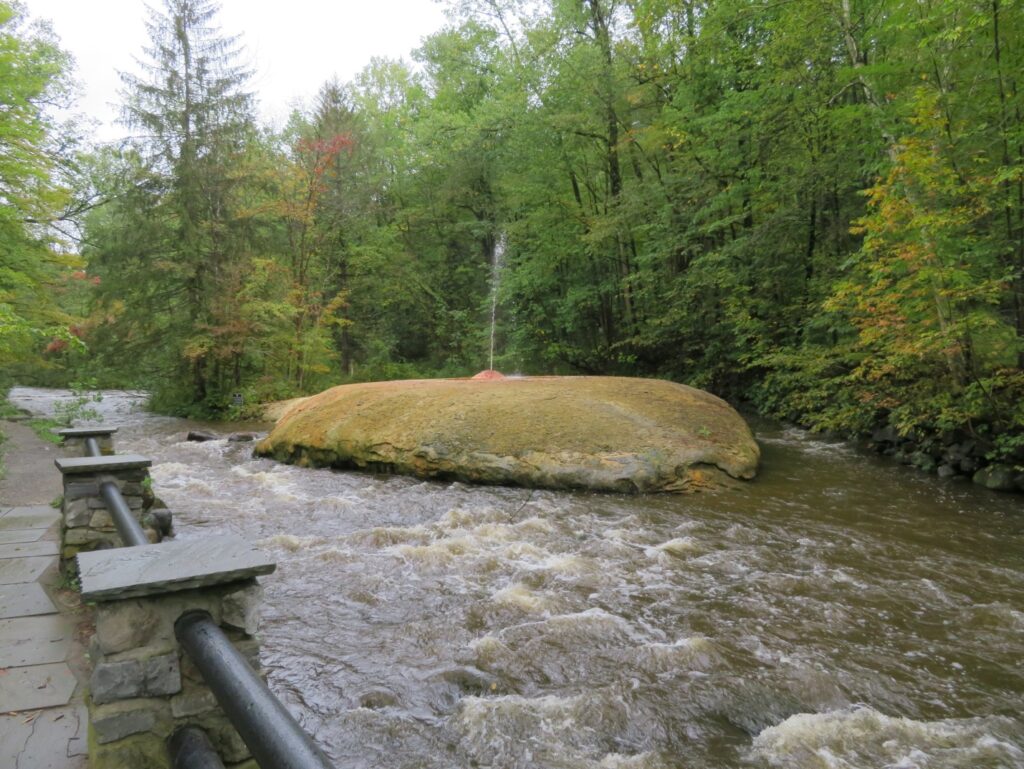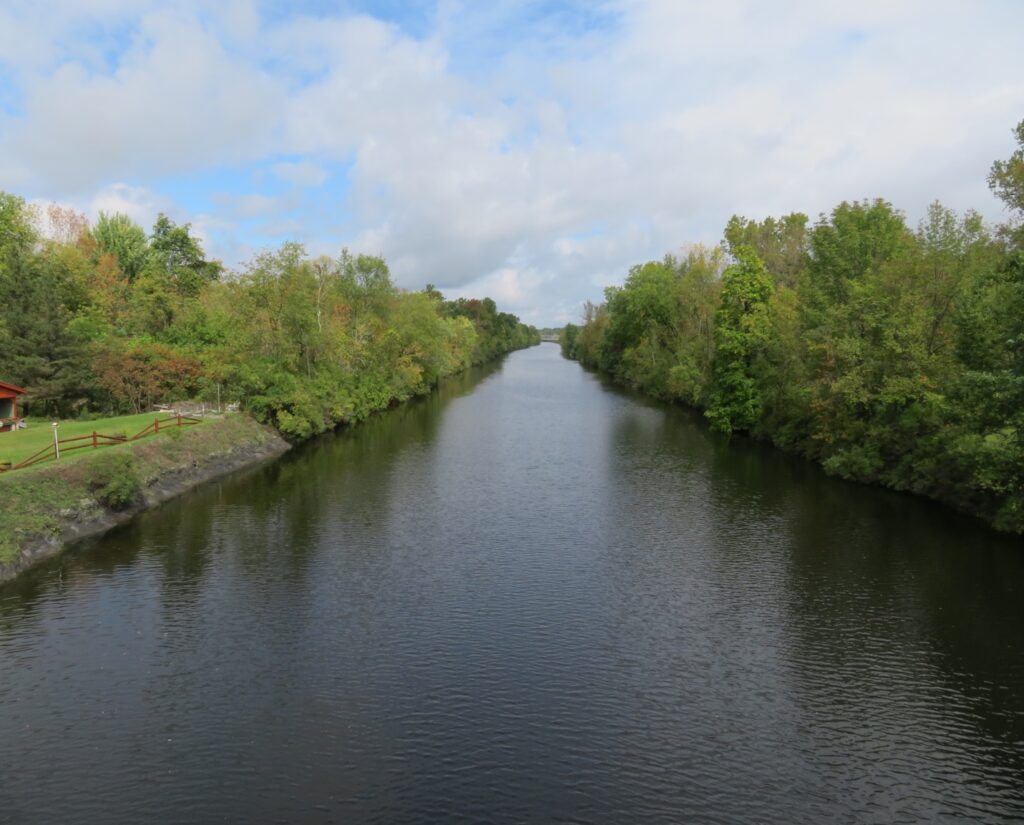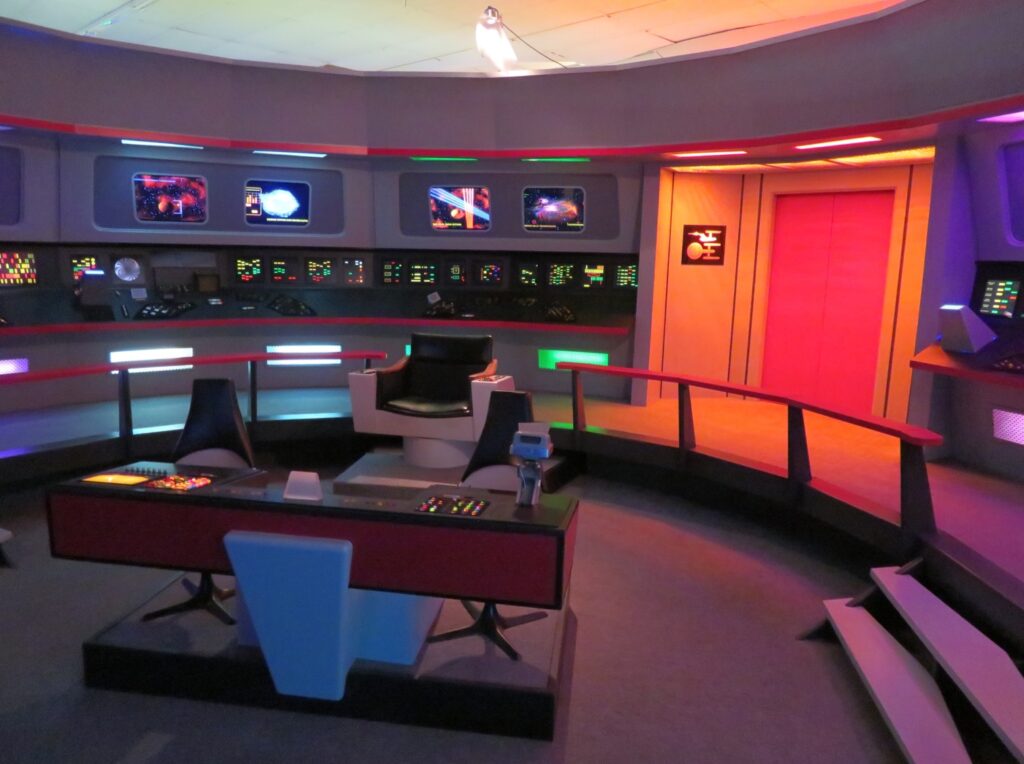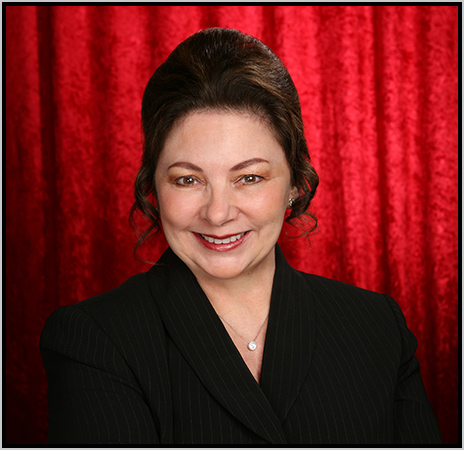The next morning we had breakfast in their formal dining room (above on the right). Then we got our coats and headed to the large park that is part of the town, the Saratoga Springs Spa State Park. We entered one of its many entrances and walked to several geysers within it. Most are small that spit out their mineral waters. One was very orange brown from the iron deposits, others were more yellow. We walked a path to see the Orenda Spring Tufa, a multicolored mound of mineral deposits that shoots up mineral water in the middle of the Geyser Creek.

Orenda Spring Tufa, Geyser Creek
The Mohawk tribes were attracted to this land for hunting, and they believed that the springs had healing powers. In the mid-1800s, Saratoga became popularly known as a health destination with many bathhouses and mineral spas that are still open to the public today. Early carbonated soda companies capped off some of these waters for their flavored bottled sodas, but were eventually shut down, due to their overuse and causing the geysers to cease flowing. Only years after the soda companies went away, did the waters return. There are 18 public mineral springs in town, some of which can be seen during the walk down the half-mile trail along the Geyser Creek, along with the tufa. Further along the creek, which was pretty full from all the recent rain, the mineral water poured over a cement dyke, with a slight sulphur smell. The park is fairly large, which the creek is only one part of. There is also a sculpture park with fountains. Two looked of interest: one of the four caryatids, and another of two mermen eternally spitting out water from two marble conch shells, called Spit and Spat.
We continued our driving tour heading toward Schuluylerville, then along U.S. 4, north to Fort Edward and Fort Ann, to the Lakes to Locks passage. We stopped to take a closer look at the locks on that side of Lake Champlain. We drove over on one bridge, down a road and then crossed back on another bridge.

Lakes to Locks passage
From there, we drove on Highway 22 into Ticonderoga. We had hoped to check out the Ticonderoga Fort, but with the rain beginning to fall, and the cost of $25 per person to enter, it was likely that our visit would have been limited to walking explorations and what we could see. Instead, we drove back to town and decided to have lunch at a 50s diner called Burleigh’s Luncheonette. When dining, we saw a sign for The Star Trek Experience building across the street.
Star Trek, here? So we crossed the street when done and decided “to go where millions have gone before,” and it turned out to be the biggest surprise on our trip. We entered the Star Trek exhibit and tour, joining a tour group that had just begun and followed the crowd. Inside the converted old grocery store warehouse is the only exact copy of the interior of the show’s starship, the Enterprise, and people from around the world come to see it. William Shatner goes at least twice a year, and still enjoys hitting the com button.
There were many rooms that had been recreated: the transporter room, sick bay with several rooms, the conference room, Kirk’s and Spock’s quarters, engineering, and the bridge. It was expertly put together with painstaking authenticity. The guide, a young man who knew everything about the show’s run, all through would tell us the story behind a certain prop or room, or hallway, various camera angles, how things were made and changed for different shows. There was also a fake Vulcan harp, played in a number of episodes by Spock, signed by all of the show’s stars who had come to visit. We left having learned many interesting behind-the-scenes things about the show. A lot more pictures and story can be found here.

The Star Trek Experience
When we left, we headed down Route 9 on the west side of Lake George, and that night we ate at the Brook Tavern, and a separate review is here.
 The official website of Lita-Luise Chappell, writer on sex, magic, food, distant lands, and everyday life with articles, poetry, novels, travelogues, rituals, cookbooks, and short-stories.
The official website of Lita-Luise Chappell, writer on sex, magic, food, distant lands, and everyday life with articles, poetry, novels, travelogues, rituals, cookbooks, and short-stories.
